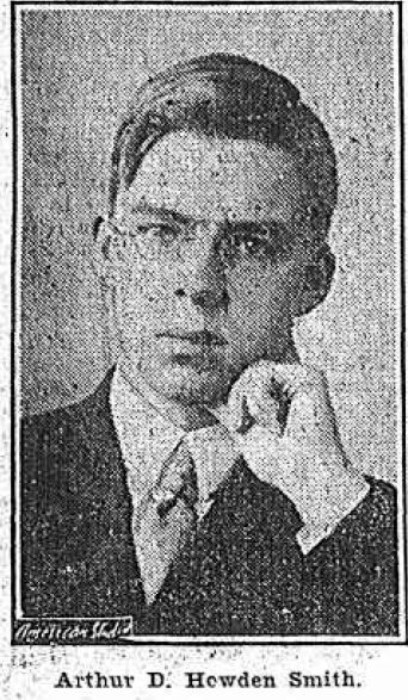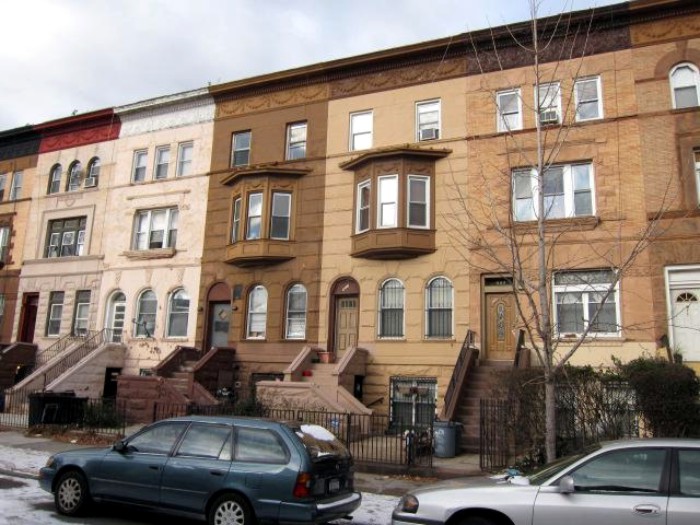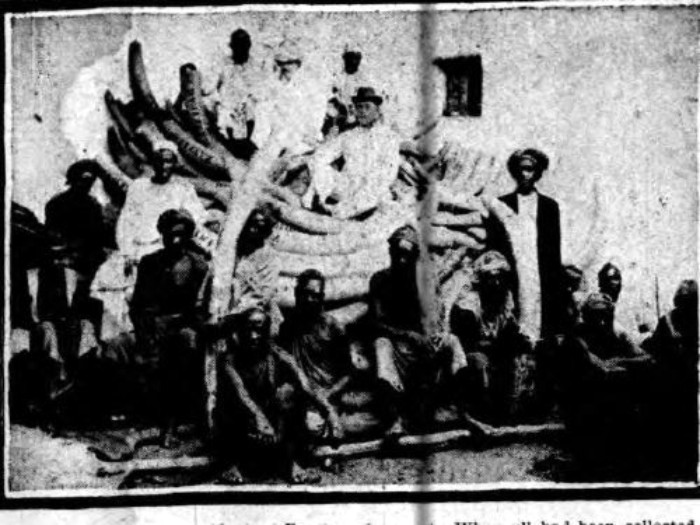Walkabout: The Prolific Pen of Arthur D. Howden Smith, Part 1
Read Part 2 of this story. Many writers have found Brooklyn to be an amiable place to live while penning works of great importance, or at least works that pay the rent. Whether that work is a great novel or autobiography, or just a self-important blog post, writers have put pen to paper, or fingers…


Read Part 2 of this story.
Many writers have found Brooklyn to be an amiable place to live while penning works of great importance, or at least works that pay the rent. Whether that work is a great novel or autobiography, or just a self-important blog post, writers have put pen to paper, or fingers to keyboard, here in Brooklyn for as long as there has been a Brooklyn.
One of those writers is someone I stumbled across while researching a group of houses for a Building of the Day column. He wrote in the early-to-mid 20th century, and in the height of his popularity was practically a household name. By the time he died, he was only worth a few lines in an obituary column.
His name was Arthur D. Howden Smith, and for many years, he was a resident of 907 Sterling Place in Crown Heights North.
Smith was born in 1888 into an old New England family. For old Yankee stock, his family named sounded more like British aristocracy than flinty Yankee pioneers. One of his male relatives, living at the same address, was Montreville Howden Smith, who during his lifetime was a world traveler and adventurer.
Smith was British Vice Counsel to Zanzibar and an Africa expert, representative to several importing companies. In 1901 he had the dubious distinction of being responsible for the largest shipment of African elephant ivory ever sent to the United States.
According to the newspapers, it took over a year for all of it to arrive in Zanzibar. He sent a photograph of himself sitting on top of the pile, surrounded by the slaves who carried the ivory halfway across the continent. What a mighty hunter.
Montreville may have been an uncle or older brother to Arthur — the newspaper records are not clear. He left an indelible impression on young Arthur, who followed his footsteps into foreign adventures.
In 1908, Arthur Howden Smith was a copy boy at the New York Evening Post. On a whim, at the age of 19 or 20, he took off to Eastern Europe to the Balkans to join the insurgents of Macedonia in their war with the Turks.
Like foreign journalists before and after him, Howden Smith wanted to experience war and adventure firsthand as a newspaper correspondent. He traveled across the Balkans and embedded himself with a group of expat Bulgarians who called themselves “Chetniks.”
Howden Smith did not look up to the task, and in a smoke-filled café in the capital city of Sophia, the leaders of the Chetniks told him as much when he proposed to go into the mountains with them. Arthur was young, slight of build, with glasses. He looked like an Ivy League student on holiday.
The leader of the rebels told him that if he came with them, he would have to dress like them, eat what little they ate, if they ate at all, and sleep on the cold ground in the mountains. They also told him he could die.
The Turks would not recognize that he was an American, and wouldn’t care, he was told. They killed everyone they came across, and wouldn’t hesitate to kill him. They asked him if he knew how to use a rifle and if he could shoot.
His shooting experience actually consisted of target shooting at ranges and in amusement parks, but he looked the Chetniks in the face and told them he had gone to military school, which apparently he had, for a year. One of the leaders was familiar with the American military, and thought that meant Howden Smith had graduated from West Point. He didn’t bother to correct this impression.
The men at the café told him they would send him deep into the mountains with a fighting unit. Arthur thought he would just be allowed to tag along somewhere less dangerous, “with a group of shepherds,” he would later say, but this was his chance, so he took it.
The Chetniks expected him to keep up, and to fight, as well, if it came to that. This was not a vacation. Arthur agreed, and the leaders clapped him on the back, poured drinks, and saluted him with “Viva, Amerikansky Chetnik!”
Arthur Howden Smith spent three months with his Chetnik band in the mountains of Macedonia. He was involved in many guerilla actions against the Turks, and almost died a couple of times.
Like Dan Rather with the Mujahedeen in Afghanistan, almost a century later, Howden Smith was the consummate embedded journalist freedom fighter. He dressed like a Chetnik, learned the language and the culture. He had the adventure of a lifetime, and when he came home, he sat down and wrote a book called Fighting the Turk in the Balkans.
The book was published in 1908 by G. Putnam Sons, one of the largest publishing companies around. Mr. Putnam himself was so thrilled by the unfinished manuscript he received, that he stayed up all night reading what he had, and sent it to the typesetters as soon as it was finished.
Smith could write descriptive prose like a master; he was a born storyteller. Because it was his story, he spun a tale of adventure that propelled him into the spotlight. He was now the proclaimed “expert” on Bulgaria and Eastern Europe. Of course, it all went to his head.
He started giving interviews which were incredibly pretentious. “Being interested as I was, in the revolutionary movement to free Macedonia, it was inevitable that I should have to take my share in the cabals and conspiracies of the feverish little capital.” He told an Eagle reporter after the book came out.
“It seems strange, I’ll admit, to think of a peaceful Brooklyn citizen’s joining in a wild Balkan intrigue, but it seemed natural enough in Sophia. Sophia is a hot bed of intrigue. Within a few days after my arrival, I discovered that several different parties were playing for my hand. You see, every newcomer is fair game for the contestants. They never know how valuable a stranger might turn out to be.”
Smith enjoyed his new Bulgarian friends, but could not help but comment on their culture and appearance. “I found the Bulgars a plucky, wide-awake, intelligent sort of people. They are the Russians invigorated by a dash of Americanism. Indeed, they are called the ‘Yankees of the Balkans.’ Big strapping yellow-haired fellows, they make magnificent soldiers.”
“Personally I found the Bulgars very likable at close range. I lived at times with peasant families in their homes, sharing their food and lodging, and no matter how mean their circumstances, they gave freely of all they had.”
“It is a characteristic of the Bulgar race that the men, when at all educated, are generally good looking, while the women are exactly the reverse. Scientists say that this is because up to thirty years ago, in accordance with Turkish custom, the women were merely beasts of burden.”
Arthur wanted to go back to Macedonia, but he never did. Instead, he was hired as reporter for the Post from 1908 to 1915. He got married in 1912. His ability to write a ripping good tale was too good a skill for just one book of true life adventure. Arthur Howden Smith knew there were many more tales to tell.
Read Part 2 of our story here.

907 Sterling Place, the Howden Smith home. Photo by Nicholas Strini for PropertyShark

Montreville Howden Smith on his load of ivory, surrounded by slaves. 1901 photo via NY Herald.
Related Stories
6 Stories That Celebrate Brooklyn’s Illustrious Literary History
Arthur Howden Smith, From Adventurous Reporter to Prolific Pulp Fiction Darling
A History of Brooklyn’s First Free Public Library, at the Pratt Institute





What's Your Take? Leave a Comment